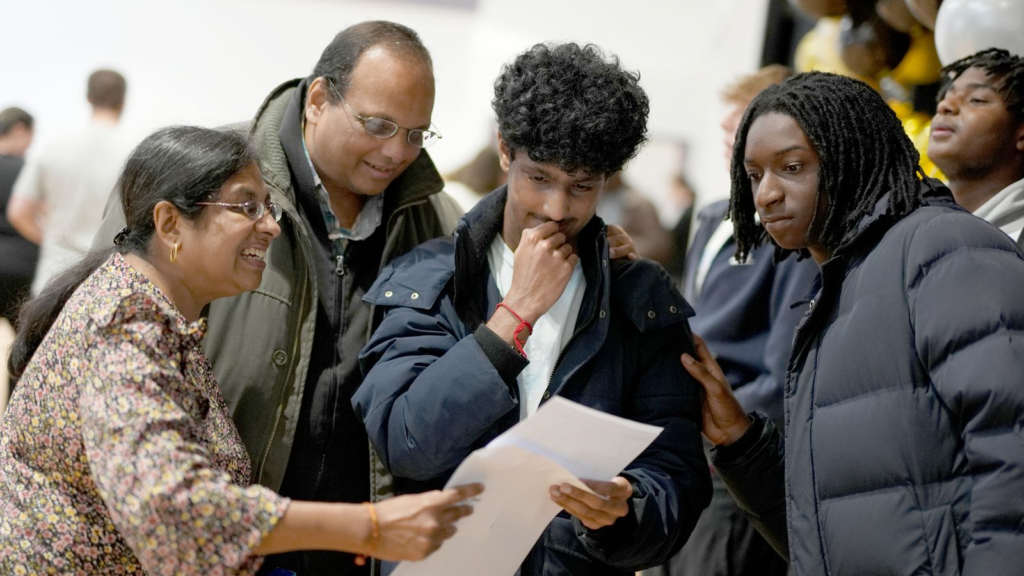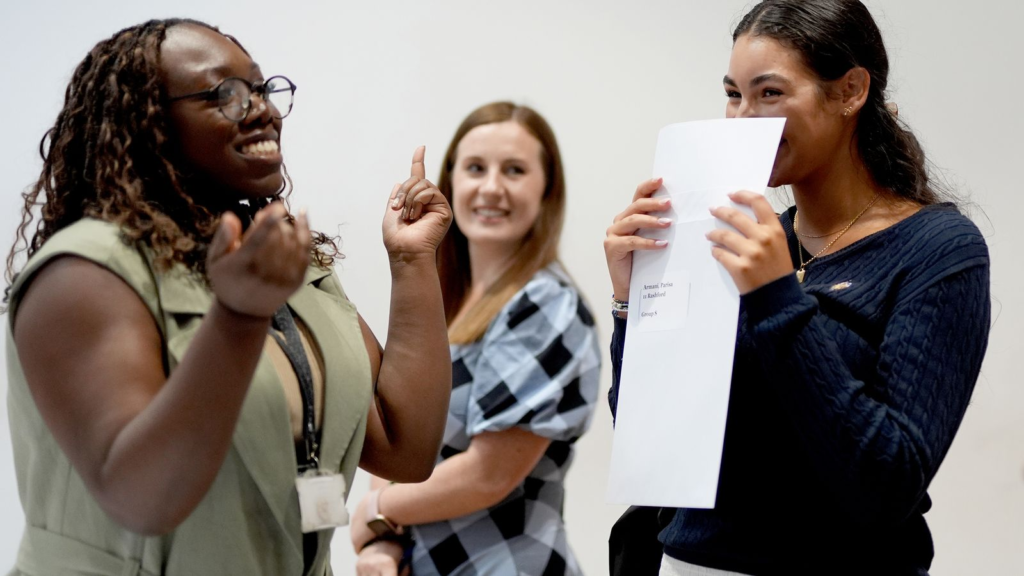Hundreds of thousands of teenagers received their GCSE results, but the proportion of top achievers was slightly down compared to last year.
Last year England returned to pre-pandemic levels, and exam authorities in Wales and Northern Ireland also made changes this year.
The Joint Council for Qualifications (JCQ) announced that more than 6.5 million certificates were awarded for GCSEs and level 1 and 2 vocational and technical qualifications (VTQs), the highest results ever across the three countries.
GCSE results were similar to last year, with more than a fifth of participants, or 21.8%, achieving the top grade (at least a 7 or an A). This is slightly lower than the 22% in 2023, but higher than the 20.8% in 2019, before the pandemic.

Approximately 67.6% of students achieved a grade of 4 or above, which is considered the pass standard, compared to 68.2% in 2023 and 67.3% in 2019.
The overall proportion of students achieving a grade A or G or above will be 97.9% (compared to 98% in 2023 and 98.3% in 2019).
In Northern Ireland and Wales these will be replaced by a 9:1 system, with 9 being the highest grade.
An A 4 is roughly equivalent to a grade C and a 7 is roughly equivalent to a grade A.

GCSE enrolments rose by 4.8% to more than 6.1 million, resulting in just over 50,000 more students being awarded the highest grades last year.
In a post on X, Prime Minister Keir Starmer said: “Congratulations to everyone who received their GCSE results today. You’ve all done a fantastic job.”
“I know the power of education and opportunity. My Government will ensure that everyone’s career path is determined by their talent, skills and ambition, not their background.”

The disruption to education caused by COVID-19 has seen top GCSE and A-level grades rise in 2020 and 2021. Results are based on teacher assessment rather than exams.
The proportion of A-level students achieving the highest grades last week rose year-on-year, surpassing the pre-pandemic peak.
Many of the pupils who received their GCSE results were in Year 7, whose schools were closed due to the pandemic.
Education leaders have warned that years have faced many challenges in their secondary years in recent years.

Enrolments of students aged 17 and over increased by 20.5%. Many of them are likely to retake their exams as standards return to pre-pandemic levels.
Girls still perform better than boys but the gap has narrowed slightly. The ten most popular subjects remained the same as last year, with Science Double Prize retaining the top spot with a total of 980,786 applications.
Mathematics remains the second most popular subject, followed by English, but outside the top ten, Business Studies has risen by 9.7% to 12th place from 14th.

‘Deeply concerned’ about inequalities
Schools Minister Catherine McKinnell said:
“While this is a time for celebration, I am deeply concerned about inequalities in our education system, which continue to have a huge impact on your opportunities depending on where you live and the type of school you go to.”
Figures from exam regulator Ofqual show that the gap in GCSE results between private and state schools in England has widened in the higher grades this year.
Almost half (48.4%) of private school pupils achieved a grade 7 or above, compared with 19.4% of comprehensive school pupils – a difference of 29 percentage points compared to 28.2 percentage points last year.
JCQ figures show that London and the South East continue to lead the way in top grades compared with the rest of England, with more than a quarter of entries achieving at least grade 7 (London 28.5%, South East 24.7%).
At the other end of the table, the North East has the lowest proportion, with 17.8% of entries achieving at least grade 7.
The gap between London and the North East narrowed slightly, from 10.8 percentage points last year to 10.7 percentage points this year.

